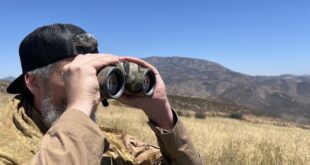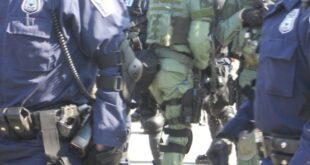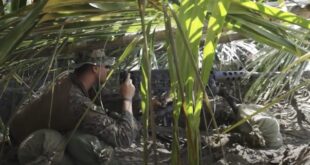by Michael Scollon and Fereshteh Ghazi
Sharmin Habibi recalls the circumstances of her husband’s killing at the hands of Iran’s security forces. But she could be talking about any number of the protesters who died across the country during a brutal state crackdown on dissent over the past year.
“I was told that they did not kill him, that he must have had an enemy, that no officer had opened fire, and no bullets were fired,” Habibi told RFE/RL’s Radio Farda while speaking about the death of her husband, Fereydun Mahmudi.
More than 500 demonstrators have paid the ultimate price for expressing their outrage at the death of Mahsa Amini, a 22-year-old Iranian-Kurdish woman who died in police custody in Tehran on September 16, 2022, after being detained for allegedly violating the country’s controversial hijab law.
READ MORE about Mahsa Amini
The 32-year-old Mahmudi was among the first to die — and the first in Amini’s hometown of Saghez, in the northwestern Kurdistan Province — for his support of what began as a local call for an investigation into the 22-year-old woman’s suspicious death.
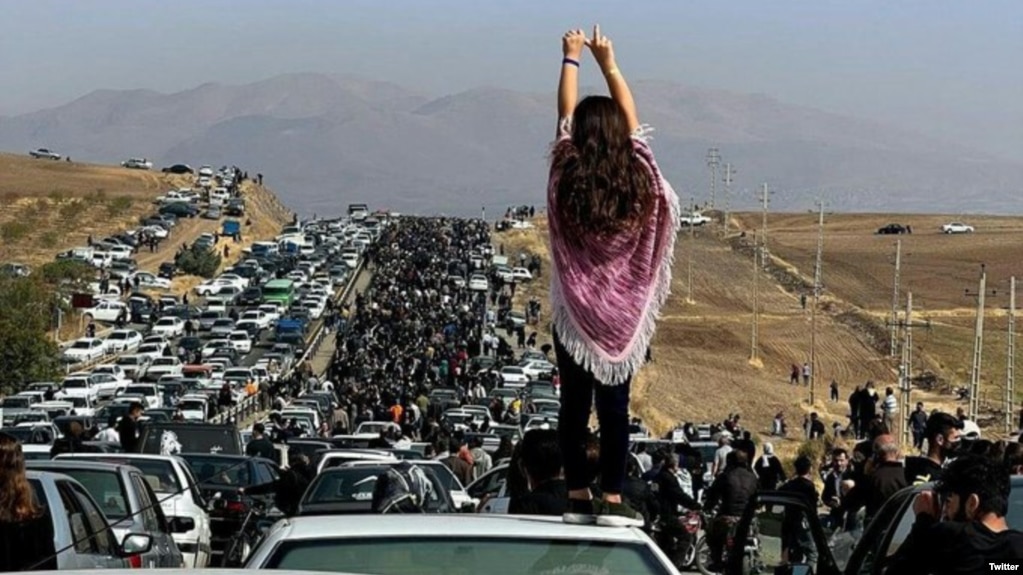
When the authorities responded with force and made clear they would not tolerate any dissent, the protests quickly spread as tens of thousands of people poured onto streets across the country.
The monthslong protests began as a rebuke against the brutal enforcement of the hijab, a key pillar of the Islamic republic. But they soon snowballed into one of the most sustained antiestablishment demonstrations against Iran’s theocracy, with some protesters calling for an end to clerical rule and demanding their social and political freedoms.
The most sustained protests and the deadliest crackdowns during the demonstrations occurred in regions that are home to ethnic minorities, including Kurds, Azeris, and Baluch, which have long-standing grievances against the state.
Women, Life, Freedom
Just hours after Amini was taken into custody by Iran’s morality police on September 13, 2022, she was lying in a coma in what would be her death bed in a Tehran hospital.
How she went from a visit to the Iranian capital with her family to a grave in Saghez within a week was the question that sparked months of unrest.

Based on eyewitness accounts, her family maintained that Amini had been beaten by the morality police while being driven to a Tehran detention facility. The family also refuted officials’ claims that she had fallen into a coma after a dispute with guards due to a preexisting health condition. During her brief stay at the Kasra Hospital in northern Tehran, images of her bleeding from one of her ears cast further doubts on the official narrative.
Upon hearing news of Amini’s death, dozens of people gathered in the vicinity of the hospital, pinning the blame for what they called a murder squarely on the clerical establishment that had just weeks before vowed to punish violators of the hijab law.
Gatherers, including women who had removed their hijab, chanted: “We will kill the one who killed our sister” and “Down with the dictator,” in reference to Supreme Leader Ayatollah Ali Khamenei.
Security forces, wary that the loose-knit protest would spread, quickly stepped in to block off streets and beat back participants with batons and warning shots.
The Secret Is Out
On the day of Amini’s death, Kurdish political parties called for a general strike to be held in Kurdistan Province on September 19 to protest what they called a “state crime.”
But by the time Amini’s body arrived in Saghez for burial on September 17, public anger in the province — where residents have long accused the authorities of suppressing and discriminating against the Kurdish ethnic minority — was already at a fever pitch.
Backed by a large crowd that assembled before dawn in front of the small city’s cemetery, Amini’s family prevented security forces from burying her in secret, and announced that they would hold their own funeral late that evening.
“They tried to pressure us to bury Mahsa [in secret], which I said I would not allow under any circumstances and that the people and families and even her mother should be present,” said Amini’s father, Ahmad Amini. “At my insistence, the [funeral] plan was changed.”
He also fiercely denied claims by Iranian officials that his daughter had had brain surgery at the age of five that may have contributed to her death, saying she was “perfectly healthy” and lamented that his request that a coroner examine bruises on her body was refused.
“My concern is that the authorities are spreading lies about my daughter every day,” Ahmad Amini said.
More arrests and violence ensued after some mourners attempted to march toward the local governor’s office.
“After the burial, the atmosphere in the city was highly securitized,” Bakhtiar Khoshnam, head of the Mukrian news agency in Saghez, told Radio Farda. “The situation in Saghez resembled undeclared and unofficial martial law.”
A Rallying Cry
Ahead of the anniversary of Amini’s death, Habibi explained her husband’s motivations to join the general strike that had been called in Saghez.
“Why was he so upset? [Amini’s] father said many times that there were no problems with her hijab, so why did they bring this calamity on this young girl?” Habibi told Radio Farda. “I said, ‘I know you are upset. It is very difficult for me, too.'”
She begged Mahmudi not to go to the streets on September 19. But she said he could not get over the belief that he had to do something.
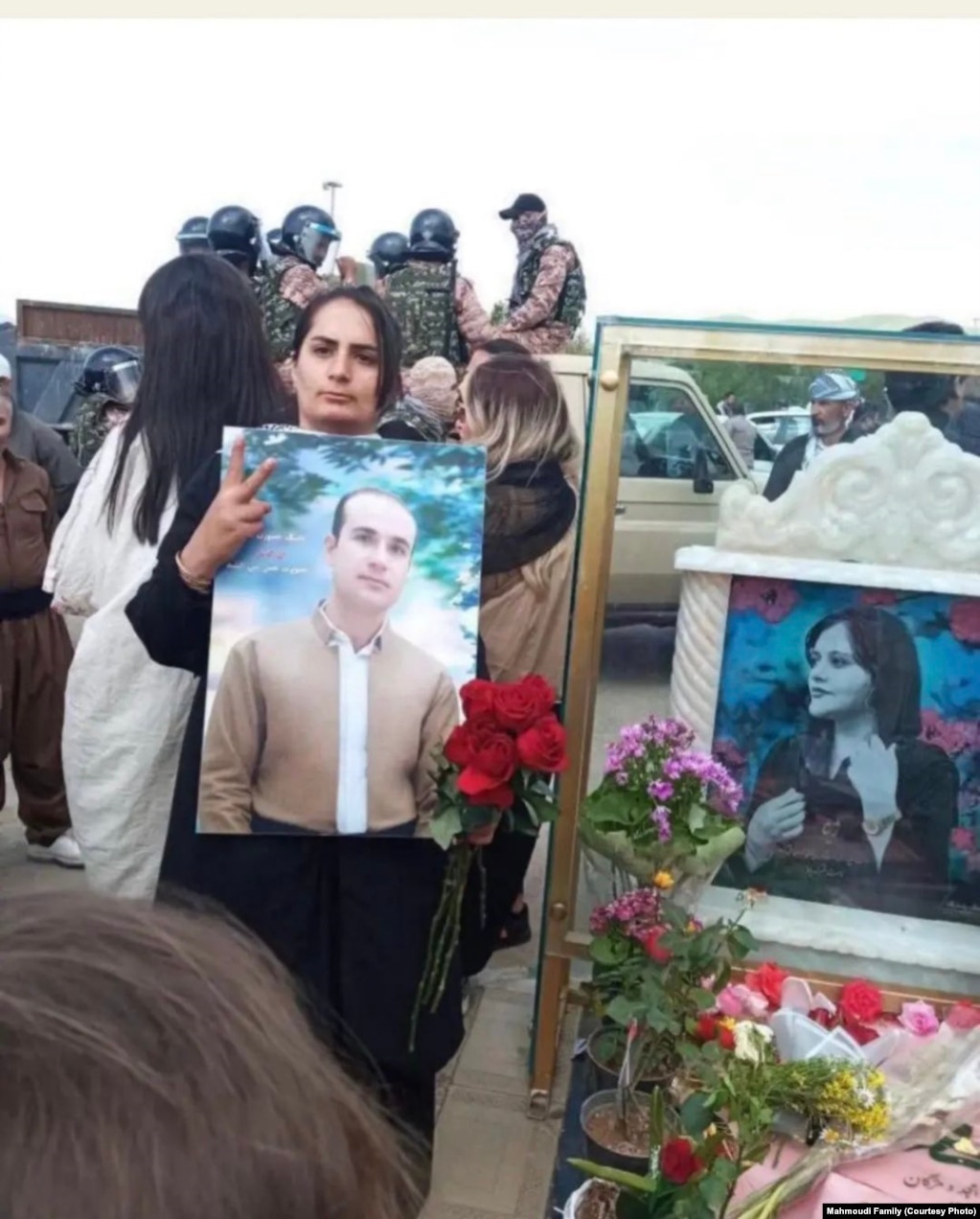
“I was sure he was going because he was very sad for Amini. He prayed and said goodbye to my son, but he didn’t say anything to me,” Habibi said.
“That night, when he did not come home, his cousin called and I told him that Fereydun had not returned,” she added. “He said that many people had been arrested and I collected our documents to head [to the police station] with my son.”
It was an experience that was repeated countless times across the country over the course of the year.
The local police initially denied Mahmudi had been arrested, before reversing course and telling her that he had, all the while pressing Habibi for information about who her husband had been in contact with.
“It was 3 or 4 in the morning when we found out that he had been shot” near a mosque, Habibi said. Mahmudi had been beaten, both of his hands had been broken, and his body was riddled with bullets, she said.
Local officials then denied security forces had killed him or that any shots had been fired. But Habibi said she was also warned against holding a funeral for Mahmudi, because they “didn’t want a crowd” like the one that had turned out for Amini’s burial.
Despite the threat of repercussions, Mahmudi’s went ahead with the funeral, laying him to rest just 200 meters from Amini’s grave.
From RFE/RL
 Soldier of Fortune Magazine The Journal of Professional Adventurers
Soldier of Fortune Magazine The Journal of Professional Adventurers


